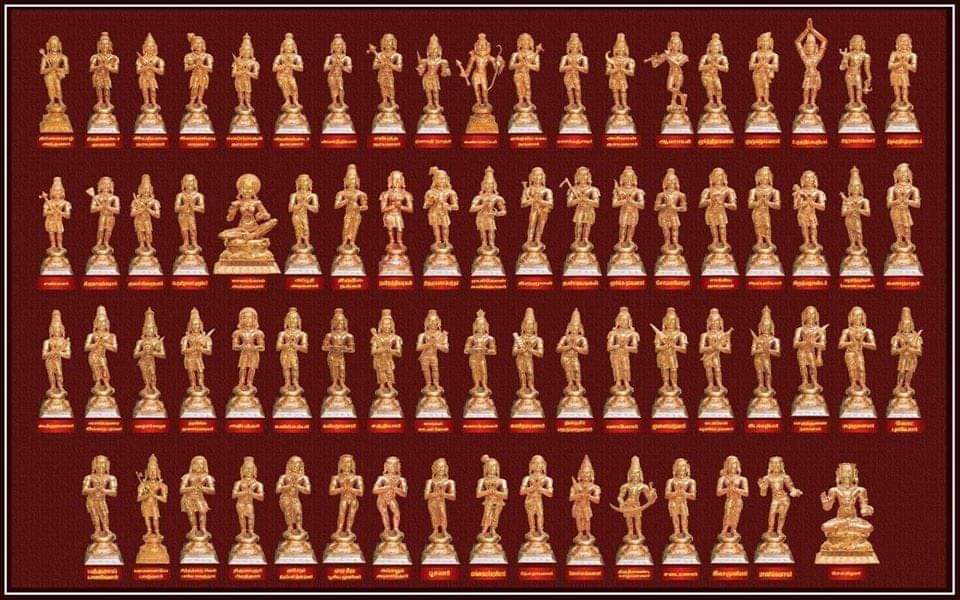

Thevarams are recited as part of the Pancha Puraram from the Agamic practice in the Saivaite temples in Tamil Nadu. However the emphasis of the scale is bound to conformity to the sahitya or lyrics and is not on creativity or improvisation, as in the Carnatic system. The scale of the Pann system conforms to 25 ragas of the Carnatic system. Each Thevaram comprises of 10 stanzas, known as Pathigam and is set to an ancient Tamil melodic mode, known as the Pann. The next 3 by Saint Thirunaavukarasar and the 7th volume by Saint Sundaramoorthy Nayanar. The first 3 volumes of the Tirumurai are Thevarams recited by Saint Thirugnanasambandar. The Thevarams are the first seven volumes of the 12 volume Shaivaite poetry collection, know as Thirumurai and also the 5th Veda in Tamil Nadu. Thevaram means Divine (The) Garland (Aaram).

Thevarams are sacred 7th century hymns, in Tamil, recited during by Saint Thirugnanasambandar, Saint Thirunaavukarasar (Appar) and Saint Sundaramoorthy Nayanar. I was also eventually trained in Pann (the melodic mode of ancient Tamil) method of reciting the Thevaram by Othuvar, Balasubramaniam from Chidambaram.


Sathyalingam, a student of the Kalakshetra institution. I was formerly trained in Carnatic music by the late Viswakalabharathi, Ellanaloor, S. What started of as an experiment slowly evolved to something that I started loving. A pure self-experiment of trying to replicate or, to a great extent, imitate these musical geniuses. I was also fascinated with the various vocal gestures, especially the Gamakams. Not knowing the difference between the raga “Kalyani” and “Karaharapriya”, all I knew was, they sounded different and had its unique beauty. Loved every concert that I attended, especially those of M S Subbulaksmi Amma’s. I used to frequent concerts with my dad who was a music lover. Growing up in Singapore, I had the great privilege of experiencing visiting maestros from India. I started learning Carnatic music in my early teens.


 0 kommentar(er)
0 kommentar(er)
